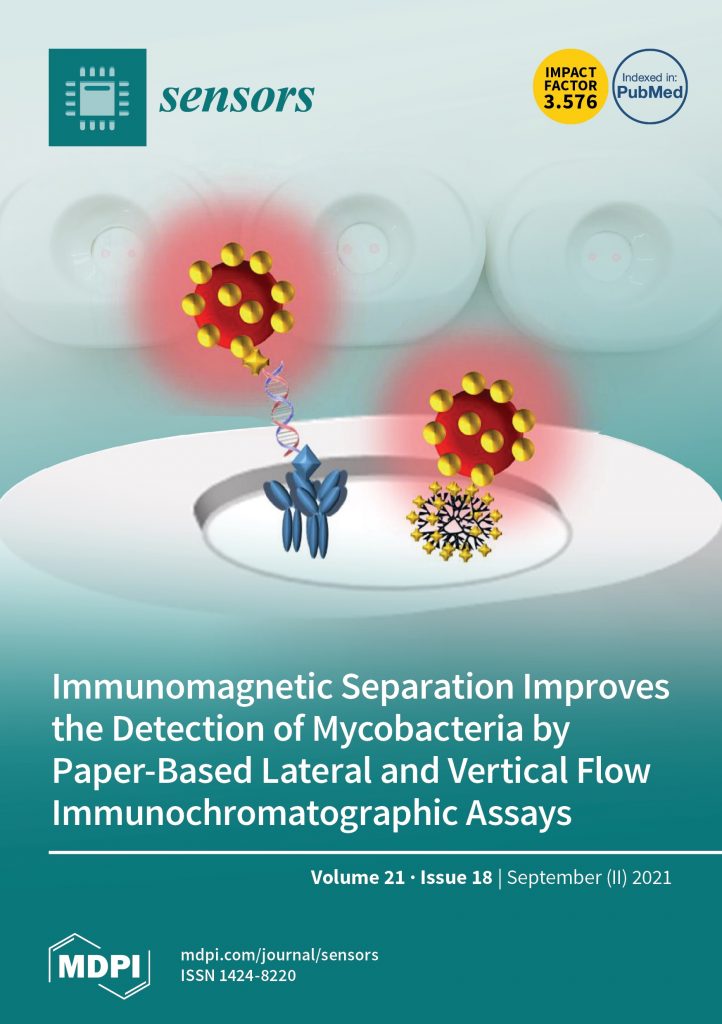Sensors 2021, 21(18), 5992; https://doi.org/10.3390/s21185992

Abstract
This work addresses a method that combines immunomagnetic separation (IMS) and paper-based nucleic acid immunochromatographic assay for the sensitive detection of Mycolicibacterium fortuitum (basonym Mycobacterium fortuitum) In particular, the preconcentration of the bacteria was achieved by using magnetic particles modified with an antibody specific towards mycobacteria. Following the IMS, the bacteria were lysed, and the genome was amplified by double-tagging PCR, using a set of primers specific for the 16S rRNA gene for Mycobacterium. During the amplification, the amplicons were labeled with biotin and digoxigenin tags. Moreover, a comparative study of paper-based immunochromatographic platforms, relying on vertical and lateral flow and on the use of streptavidin gold nanoparticles as a signal generating system, was also performed. The visual readout was achieved when the gold-modified amplicons were captured by the anti-DIG antibody in the test line. The analytical performance of both methods, nucleic acid vertical flow (NAVF) and nucleic acid lateral flow (NALF), is also discussed. Although NALF showed lower limit of detections (LODs), both NALF and NAVF combined with IMS were able to detect the required LOD in hemodialysis water, becoming two promising and useful techniques for the rapid screening of water supplies in hemodialysis centers, to prevent the exposure of immunosuppressed patients to contaminated sources. View Full-TextKeywords: rapid diagnostic tests; lateral flow assay; vertical flow assay; gold nanoparticles; mycobacteria; double-tagging PCR
